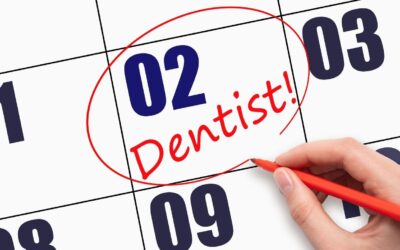Recovering from wisdom teeth removal can be a long and sometimes painful process. Knowing when it’s safe to return to normal activities is crucial for your recovery. One common question many people ask is, “Can I use a straw 2 weeks after wisdom teeth removal?” This seemingly harmless action can, unfortunately, lead to complications if done too early. The suction created by a straw can disrupt healing, leading to issues like dry socket.
In this article, we’ll explore the risks involved with using a straw post-surgery, how long it typically takes for the extraction sites to heal, and when it might be safe to resume using straws. By the end of this article, you’ll have a clear understanding of the dos and don’ts after wisdom teeth removal and the best practices for a smooth recovery.
What Happens If You Use a Straw Too Soon After Wisdom Teeth Removal?
The idea of using a straw post-surgery might seem innocuous, but it can actually have serious consequences if done too soon. When you use a straw, the act of sucking creates a force that can disturb the blood clot formed at the extraction site. This is problematic because the blood clot is essential for healing. Dislodging the clot can lead to a painful condition known as dry socket.
Dry Socket Risk
Dry socket occurs when the blood clot either dissolves or is dislodged from the socket before healing has occurred. This leaves the bone and nerves exposed, resulting in severe pain and delayed recovery. The vacuum effect of using a straw is one of the primary causes of dry socket, especially during the first few days following surgery when the clot is still fragile.
Increased Risk of Infection
Besides the discomfort caused by dry socket, using a straw prematurely can also increase the risk of infection. Any action that disrupts the surgical site could allow bacteria to enter, leading to an infection. The extraction site remains an open wound for several days or even weeks, so it’s crucial to minimize any disturbance to this area.
Pain and Swelling
If you use a straw too soon, you might also experience increased swelling and pain around the extraction sites. The suction can force the blood clot to move, and this action could trigger a flare-up of discomfort and inflammation. Therefore, it’s best to follow your dentist’s instructions to avoid any unnecessary setbacks during your healing.
When Is It Safe to Use a Straw After Wisdom Teeth Removal?
The general advice from dental professionals is to avoid using a straw for at least 7-10 days after your wisdom teeth removal. This period allows your mouth and extraction sites to begin healing. However, as you approach the two-week mark, you may be able to reintroduce a straw into your routine—but with caution.
Understanding the Healing Timeline
-
First 1-2 Weeks: Avoid using a straw during the first week or two. During this time, the blood clot is still fragile and at risk of being dislodged. The primary focus should be on preventing any trauma to the area.
-
Week 3-4: If your healing is progressing well, you might be able to slowly begin using a straw. However, you should still take care not to create excessive suction.
-
After 1 Month: By this time, most people are fully healed, and the blood clot should have been replaced by new tissue, making it safer to resume normal activities like using a straw.
Is It Safe to Use a Straw 2 Weeks After Wisdom Teeth Removal?
Now that we’ve discussed the general recovery timeline, you might be wondering if using a straw at the two-week point is safe. For most people, this is when the healing process is advanced enough that using a straw is possible. However, caution is still important.
When to Use a Straw 2 Weeks After Surgery
If you’re 14 days post-surgery and feeling relatively pain-free, it’s often okay to use a straw, but be gentle. The key is to avoid creating too much suction or applying excessive pressure to the extraction sites. Here are some key considerations when reintroducing straws:
-
Avoid Strong Suction: Instead of sucking the liquid forcefully, take small, gentle sips to avoid dislodging the clot.
-
Use a Soft Straw: Opt for soft plastic or silicone straws. Hard plastic or metal straws could be too harsh on your healing gums.
-
Monitor for Complications: Pay close attention to any swelling, increased pain, or other symptoms that could indicate the blood clot has been disturbed.
Remember that everyone’s healing process is different, so it’s important to listen to your body and consult your dentist if you’re uncertain.
Expert Advice: Post-Operative Care After Wisdom Teeth Removal
Following proper post-operative care after wisdom teeth removal is crucial to avoid complications like dry socket. Here are some expert recommendations for the first few weeks after surgery:
Rest and Hydration
After your surgery, rest is your best ally. Stay hydrated and ensure you’re drinking plenty of fluids to support the healing process. But remember, avoid using a straw in the first few days to prevent disrupting the clot. Drink from a glass or cup instead.
Ice Packs
For the first 48 hours after surgery, applying ice packs to your face can help reduce swelling. Apply the ice for 20 minutes at a time, resting between intervals. Swelling is a common side effect of wisdom teeth removal, but ice can significantly help in reducing it.
Oral Hygiene
While oral hygiene is important, be careful around the extraction site during the first few days. You should avoid brushing directly over the surgical area for the first few days. Afterward, you can gently rinse with salt water to keep the area clean. Just be careful not to rinse too vigorously, as this could disrupt the blood clot.
Pain Management
Your dentist will likely prescribe pain medications to manage any discomfort during recovery. Over-the-counter medications such as ibuprofen may also help. Always follow the prescribed dosage and instructions for pain relief.
FAQs
Q1: Can I use a straw the day after my wisdom teeth removal?
No, you should avoid using straws for at least the first 7-10 days to prevent complications such as dry socket.
Q2: What can I drink after wisdom teeth removal?
Stick to cool, soft liquids like water, smoothies, and broths. Avoid hot beverages and alcohol, as they can irritate the healing sites.
Q3: How long should I avoid using a straw after wisdom teeth removal?
It’s advisable to avoid using a straw for at least 10 days after surgery, but after that, you may gently begin using one if your recovery is going well.
Q4: Is it common to experience dry socket after using a straw?
Yes, using a straw too soon can increase the risk of dry socket, which occurs when the blood clot dislodges prematurely.
Q5: Can I still eat solid foods after 2 weeks of wisdom teeth removal?
Yes, after 2 weeks, you can generally resume eating soft foods, but avoid chewing near the extraction sites until you are fully healed.
Conclusion
In conclusion, using a straw 2 weeks after wisdom teeth removal is generally safe, but caution is needed. The first few days following your surgery are critical for proper healing, so it’s important to avoid using straws until your gums have begun to heal. After 2 weeks, if you’re healing well, you can gently reintroduce straws, but take care not to disrupt the healing process by creating excessive suction.
By following proper post-operative care and listening to your body, you can enjoy a smooth recovery without complications like dry socket or infection.



